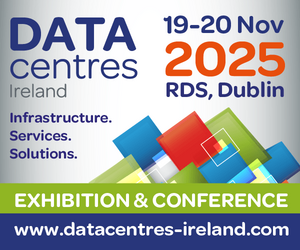Remember the dreaded cry around the office: “The server’s down again”? It used to give some people the excuse to skive off towards the tea room and all managers the heeby-jeebies about unfilled orders, unanswerable queries, unchased money and unsympathetic bank managers. Thankfully, that is comparatively rare today because even in smaller companies our PC networks and servers are considerably more robust than they used to be.
But it reminds us all of the essential role of servers. A standalone PC is really not much use in business these days. Even on the road, it needs to be able to communicate with the home network at least from time to time. Business systems today are all about joined-up applications, from sales order processing and accounts to CRM (customer relationship management) to e-mail and Internet access. They are also about sharing resources, from printers and scanners to that indispensable Internet connection. So if the network goes down you are inevitably forced to agree with the slogan that Sun Microsystems collared for itself over a decade ago: the Network Is the Computer.
It is absolutely true today. But just because there are few small businesses that have the in-house resources to intervene at that level and are forced to leave it to the experts, this does not mean that it is an impenetrable mystery. As Steve Blanch at IT services company Ergo puts it: “A server is at the end of the day a computer just like a PC and potentially prone to the same problems as any ordinary PC. But because it is made to serve the needs of multiple users and applications over a network, it is of course a much beefier animal and has evolved over several generations to be as reliable as possible.”
As a senior field service manager with Ergo, Steve Blanch has wide experience both of designing systems for the needs of specific businesses and of troubleshooting them when things go wrong. “You have to think of any server as a potential single source of failure for all of the tasks it runs. It also has to have the computing power to run a range of applications simultaneously. So a server will have a powerful processor, lots of RAM and in particular it will have larger and more robust data storage.”
Typical IT topology
The vast majority of our Smart Company readers are managers in businesses that already have a LAN and server. Like all technology in business, they will need to be refreshed periodically as the business demands grow (more people, more tasks or both) and as the technology itself progresses. Most of us at this stage have encountered the kinds of problems generated by different versions of Windows, the needs of potentially very valuable new applications for more powerful systems and so on. It often seems that every IT investment decision starts a new cascade of consequential expenditure.
So if your company’s LAN/server set-up is more than a couple of years old it is in fact very likely that it either needs upgrading or that the business could benefit from looking seriously at the possibilities.
“For example, it has become commonplace in larger organisations to invest in separate servers for specific applications or functions,” explains Alan McMahon, enterprise marketing manager of Dell Ireland.
“The whole communications area with Internet access, e-mail and remote log-on using VPN brings its own set of challenges and potential problems – such as security issues – so it can be wise to run all such applications separately from core line of business applications like sales or accounts.”
Blades in business
Server design and technology has moved on also, so that for example dual processor units offer greater computing power in the same size chassis. So called ‘blade’ servers are a somewhat more expensive but very attractive option where you can have a rack of servers each of which is about the size of a small consumer DVD player. Blades have another implication, however, in that the data storage is separated physically from the servers. It can all lead to very high performance capabilities but may well be out of the range of smaller companies other than those with specific requirements.
Scalability
The range of criteria in choosing servers is potentially vast, since it can effectively be a strategic decision about the entire ICT infrastructure of the organisation. Few businesses will venture into this territory without expert and trusted advice. “But there are a number of things the management should bear in mind,” Alan McMahon points out. “Performance is one, because when you are upgrading you should be clear about what is required for all of the applications you are running or propose to add in the foreseeable future. In a similar vein, any server investment must allow for scalability in the future as the business or its ICT requirements grow.”
Manageability
He suggests also that manageability is an important issue, certainly for the experts who will be supporting it (and therefore the business paying the bills). Operating and network systems need regular upgrading and security patching and the ease with which all of that can be managed is a real question to be addressed. Some motherboards have a special chip that directly facilitates remote access and is very useful for remote support, Alan McMahon points out as an example. In the same vein, different vendors offer sets of management tools for their servers which may in practical terms be as relevant as the actual physical specifications.
Price
But for all smaller businesses, price is an issue that is never far away. “Let’s start by emphasising that this is such a central, business-critical element of your entire ICT set-up and investment that it is totally self-defeating to be stingy,” says Steve Blanch bluntly. “On the other hand, working through exactly what you want and providing for the next likely steps at some later stage is a fairly straightforward process with the assistance of your potential suppliers. You will eventually come to a broad bottom line figure.”
While there is clearly no such thing as a ‘typical’ small business server configuration, he was willing to suggest a rough guide total of about €4,000 to €6,500 for a smart, up to date server and related technology from a reputable vendor such as HP, IBM or Dell. “You would be talking about a fast processor, say Xeon which is the current market default choice in servers, with about 2Gb or more of memory. Data storage would start at three 80Gb disk drives with RAID 5.0 protection and a tape drive for off-site back-up. Of course you would have to have UPS (Uninterruptable Power Supply) also.” For a small business, the idea of multiple dedicated servers is not necessarily the better option, Steve Blanch feels, because the performance and reliability of current dual-processor, high specification servers gives similar benefits in a single and more manageable unit.
He points out that you also have to budget for the operating system, nowadays most commonly the Microsoft Small Business Server 2003. This suite also includes e-mail and internal network collaboration tools (MS Exchange, Outlook) and the guide price includes licences for five users. Further user licences come in increments of five. The actual hardware could well serve a much larger number of users, depending on the types of business application in use.
The cabinet secret
Every known systems installation expert will tell you that servers and related equipment should be protected in a purpose-built cabinet in the absence of a dedicated computer room (not common in smaller companies). They offer safer, more rational housing for servers, PBX, data storage, switches/routers, patch panels etc. with organized cabling, power supply and UPS. Some are simple protective enclosures with shelving racks and cable guides, others can be air-conditioned with a glass front door for monitoring of visible systems status indicators (LEDs, usually).
A cabinet is not a safe but it does protect from accidental damage or interference. A small business should budget from about €500 to perhaps €1,000 depending on the size and specification, but a good cabinet will outlast most of its contents. Combined with the clear organisation and labelling of all cables, it is an investment that repays by minimising time wastage in repairs and changes as well as its protection value.
Never be powerless
A computer system without electricity is less useful than an abacus. A checkout till in a power cut would be outperformed by a nineteenth century cash register. As we become more and more dependent on smart electronic systems we are also totally dependent on the electricity supply. What is even less recognised is that our IT systems also depend on a good quality electricity supply, free from voltage surges (spikes) or dips (brownouts) and other dangers to a ‘clean’ power supply that most of us know nothing about. All computer systems are sensitive to power fluctuations and even small voltage variances – the kind of flicker in the overhead lights that we barely notice.
So you must invest in some form of electrical protective system for your server(s). Uninterruptible Power Supply (UPS) is the thankfully self-explanatory jargon in the industry. This is essentially a mains power filtering system and an internal high-power battery. The UPS unit ‘cleans’ the power supply on a constant basis and the battery will provide power for a period in the event of a mains power failure.
“Too many businesses ignore the single point of failure that is the three-pronged socket in the wall,” says Tom Keane, sales director of CMS Peripherals, a leading distributor of UPS systems from APC, Tripplite and other manufacturers.” A UPS can help by providing battery power in the event of mains failure, which is almost inevitable from time to time. But perhaps more importantly it can filter the power to your sensitive computer equipment. Not enough small businesses appreciate the dangers. For example, it is estimated that 70% of hard drive errors can be directly attributable to poor or fluctuating power.
The cost of UPS protection is not expensive. Tom Keane suggests about €100 per desktop for PCs and peripherals and perhaps €700 for server and network equipment. In the event of mains failure, that should give more than enough time (say 10 to 30 minutes) to immediately complete essential tasks and perform an orderly shutdown. Laptops are independent, of course, but when used in the office he recommends always connecting them through a surge suppression strip.
RAID Protection
Data storage is essentially outside the scope of this article but most small businesses will still hold their corporate data at server level, the traditional solution. So it should be emphasised that any server investment should allow for at least three hard drives so that data can be protected by a RAID system. There should be space in the chassis for at least five hard drives in total. The minimum spec for a hard drive at this level is 80Gb capacity but larger capacity drives should be considered not only for potential data growth but because they tend also to be faster in performance.
RAID stands for Redundant Array of Independent Disks, i.e. a set of ordinary disk drives with the data spread across them to multiply the odds against total loss. RAID also involves data management software (normally included in new server purchase) and follows a standard set of rules for different levels of protection, e.g. RAID Level 0 spreads the data across all drives to improve performance while RAID Level 1 is simple disk mirroring – two drives, identical copy data on each. The ‘levels’ refer to the different approaches to utilising the capacity to achieve data storage objectives rather than degrees of security.








Subscribers 0
Fans 0
Followers 0
Followers